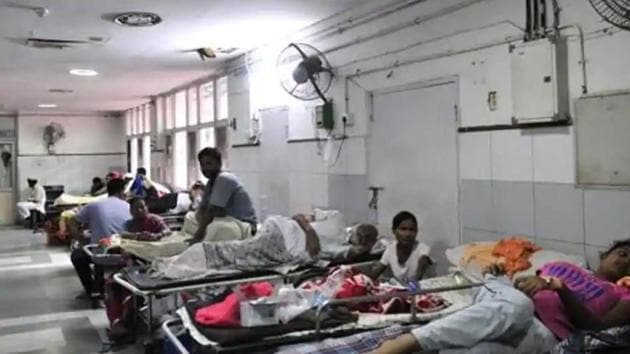BMC’s plan for air-conditioned general wards needs to be studied
Some doctors, who have opposed the proposal, have said that the installation of a ventilation system in general wards might spread hospital-acquired infections
The Brihanmumbai Municipal Corporation (BMC) has plans to air-condition the general wards of its hospitals. The announcement should not have been contentious; all modern medical centres have ventilation systems to control temperature and reduce humidity to prevent the spread of pathogens.

In Mumbai, however, some doctors have opposed the proposal, oddly, for the same reasons why experts recommend air conditioning in the first place: they have said that the installation of a ventilation system in general wards might spread hospital-acquired infections (HAI). The dean of the city’s largest public health facility — KEM Hospital, Parel, said that as people with undiagnosed diseases and relatives of patients visit these wards, the chances of the spread of HAI is high in a climate-controlled environment. Independent infectious disease experts, who spoke to this newspaper, said, a good filtering system can stop transmission of HAIs, but as the movement of patients and visitors are much higher (in public hospitals) than private hospitals, the BMC should do a study of the outcomes before going ahead with the plans. It is estimated that the municipal hospitals across the city attend to over 55,000 patients in the outpatient sections daily. The municipal healthcare setup has about 12,000 beds — more than a quarter of the total hospital beds in the city.
The municipal health department has now set up a Hospital Infection Committee to study the proposal before it is implemented.
There is no doubt that municipal health facilities are poorly ventilated. In 2018, a study commissioned by the BMC and Centre for Disease Control and Prevention (CDC) found that one in ten municipal clinics need major structural changes to prevent transmission of airborne diseases, especially tuberculosis (TB) among patients and staff. One clinic in Santacruz (East), which treated patients infected with drug-resistant strains of the disease, also received people with less severe medical issues, putting the latter at risk of getting infected with TB. A survey published by the CDC in 2014 revealed that 4% of inpatients at hospitals in the United States suffered from at least one HAI, with chest infections like pneumonia and surgical site infections each accounting for a fifth of the total cases.
Some studies have shown that ventilation type — naturally ventilated, like the general wards in municipal hospitals, or mechanically ventilated, like air-conditioning — is not the major risk factor for HAIs. The layout of the facilities, patients and visitor footfalls and the pollution situation in the neighbourhood are factors that contribute to the air quality in a hospital section. Also, patients who are immunocompromised — with low immunity — may be at higher risk of catching HAIs than other patients.
The 2018 study, which inspected around 140 clinics, looked at low-cost interventions rather than expensive facilities like air-conditioning. The study looked at the number of “air changes per hour” in rooms where TB patients were treated. Air changes per hour a term to measure the volume of air entering or exiting a room compared to the volume or space occupied by the room. Medical experts say that the more the number of air changes in the room, the better it is as it reduces the risk of disease transmission.
The study — reported by Hindustan Times — found that simple changes, like larger windows, rearrangement of large pieces of furniture, pedestal fans and ventilation ducts improved air circulation. In one clinic, following the interventions, air changes per hour in the room increased from 89 to 176 air changes per hour.
To prevent the spread of infectious diseases in its clinics, the BMC said that air-conditioning facilities will be first introduced in limited areas — two wards in KEM Hospital and the outpatient department and then to orthopaedic, forensic, psychiatry departments where chances of cross-infection are limited.
Safety is a concern. Changing the layout of congested wards to accommodate the ventilation system will be onerous. The fire safety measures in the wards need an urgent upgrade. An infant died last year in a fire at KEM Hospital caused by a faulty electrical installation.

Stay updated with all the Breaking News and Latest News from Mumbai. Click here for comprehensive coverage of top Cities including Bengaluru, Delhi, Hyderabad, and more across India along with Stay informed on the latest happenings in World News.
Stay updated with all the Breaking News and Latest News from Mumbai. Click here for comprehensive coverage of top Cities including Bengaluru, Delhi, Hyderabad, and more across India along with Stay informed on the latest happenings in World News.





